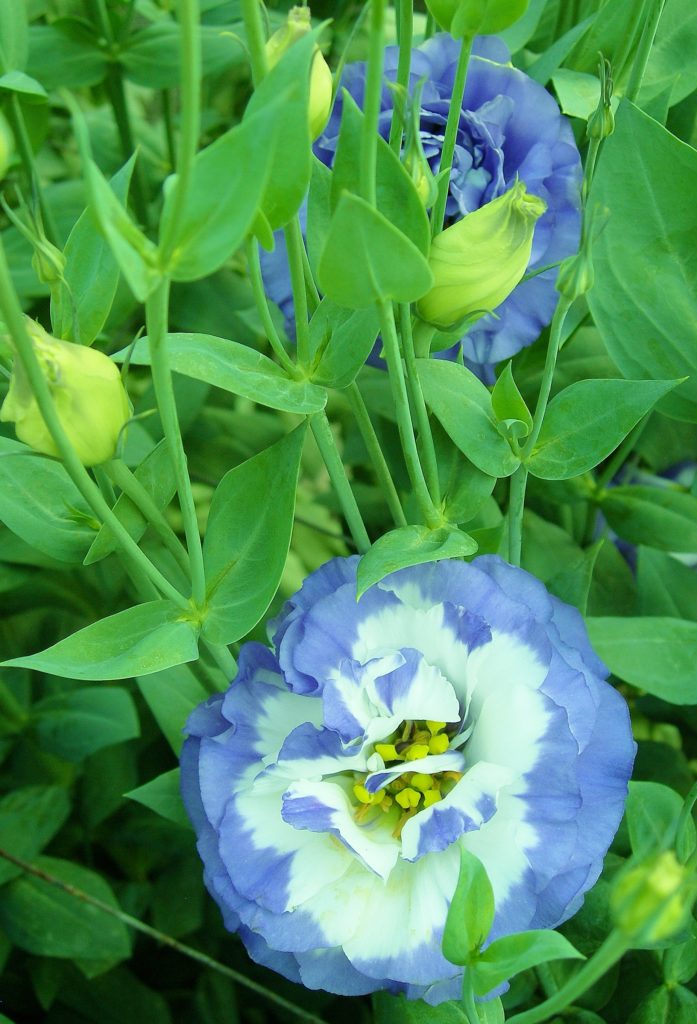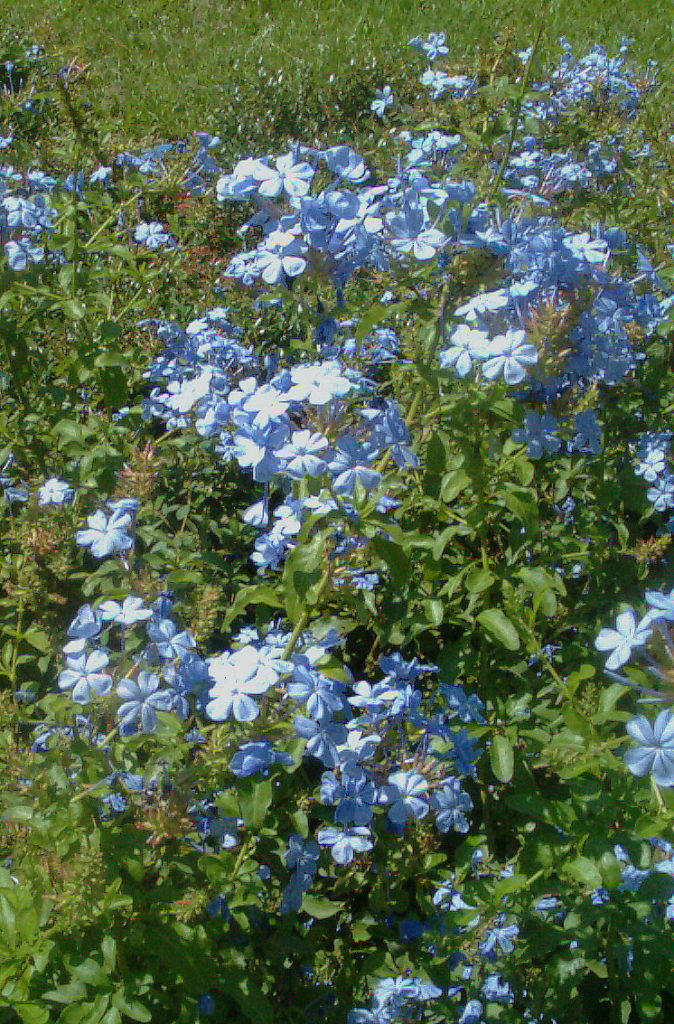
Pretty blue flowers for summer can be grown at home for enjoying outside and inside. Cutting gardens are areas set aside just to harvest the flowers for arranging and giving. Cutting gardens are more prevalent in other places but are very doable in warm-season locations.
Cutting gardens or beds can be part of the traditional landscape or vegetable garden; they can be designed to complement the area. However, many folks choose to plant groups of similar plants with wide rows to make access to cutting easier. Whatever the choice, match the plant needs to the site’s conditions; full sun or shade, well-drained or moist, and the plants will thrive.
Plant more than one plant of each type of flower; grouping plants by form and flower color avoids a kaleidoscope or messy look. The cutting garden can be made of perennials and annuals; just put the bed or garden plan on paper first. Also, plan for irrigation, low-volume is best, and mulch. Prepare the bed and plant away.
There is no better start for a blue-cutting garden than Plumbago, one of the actual blue flowers for warm locations; the cultivar ‘Imperial Blue’ has dark blue flowers and is slightly more compact. Whatever variety is chosen, provide enough space, at least 4 feet by 4 feet, for this mounding shrub to grow. Keep an eye out for Chili trips too, this pest loves Plumbago.

Other pretty blue selections which will bloom in the summer include Lisanthus, Blue-eyed grass, Passionflower, and native Petunia. Perennial salvias are good plants for the summer. Often the plants are moderately sized, great for cutting gardens, beds, borders, and containers. Most selections are drought and heat tolerant. Some favorite blue or near blue varieties include Mealycup Sage (Salvia farinacea), the hybrid Salvia ‘Indigo Spires’, and the native, blue-flowered Lyre-leaf Sage, Salvia lyrata.
Finally, cut the flowers and cure or prepare them for long-lasting blooms in the vase. Harvest blooms that are not fully open. Immediately place in a bucket of tepid to slightly warm water and place it in a cool spot for a couple to 24 hours before use. When ready to arrange, recut the stems and put them in water with a floral preservative.
The final steps are to cut plants often to encourage more blooms. Enjoy and gift a vase of flowers to friends and family, and it would be nice to drop a few off at Veterans’ homes, hospitals, and others who are often forgotten.
This article first appeared in the Treasure Coast Newspapers.
Leave a Reply